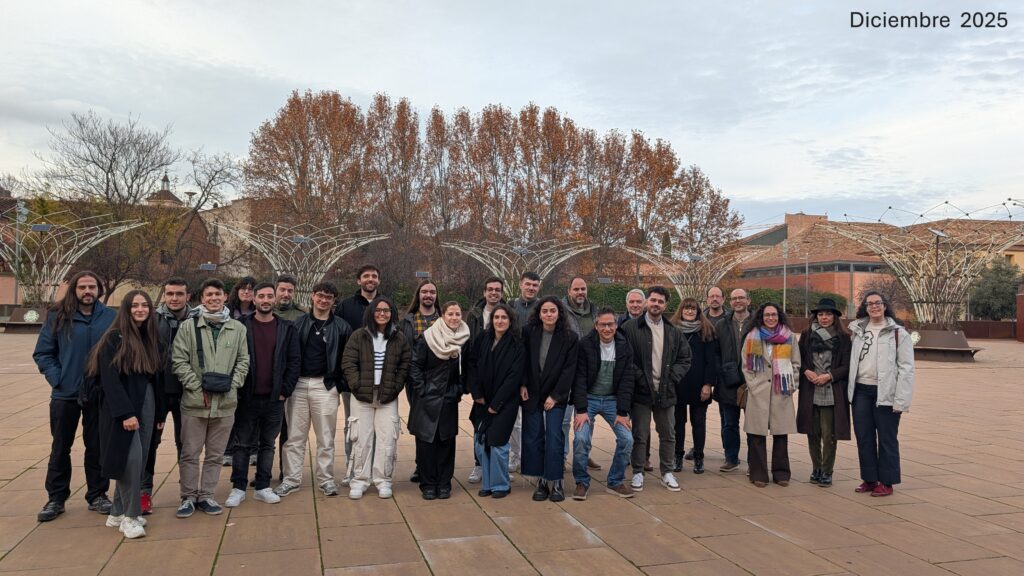
Category Archives: Noticias
Nephrol. Dial. Transplant. 2025
Troxerutin is a novel osmotic agent for peritoneal dialysis with protective cardiovascular actions
Valeria Kopytina, Vanessa Marchant, Raquel Rodrigues-Diez, Lucía Pascual-Antón, Nora Toggweiler, Lisa Strahl, Jamie Kane, Antonio Tejera-Muñoz, Marcelino Cortés, David Sucunza, Juan J Vaquero , Marc Vervloet, Dorothea Piecha, Etto C Eringa, Marta Ruiz-Ortega, Manuel López-Cabrera , Guadalupe T González-Mateo*
End-stage renal disease patients require peritoneal dialysis (PD) as a life-saving therapy; however, they continue to experience systemic inflammation and increased cardiovascular pathology. These complications can be exacerbated by exposure to PD solutions (PDS) containing glucose. This highlights the clinical unmet need for novel osmotic agents to replace glucose. Here, we tested troxerutin, an FDA-approved drug, as a potential osmotic agent.
Nephrol. Dial. Transplant. 2025
DOI: https://doi.org/10.1093/ndt/gfaf249
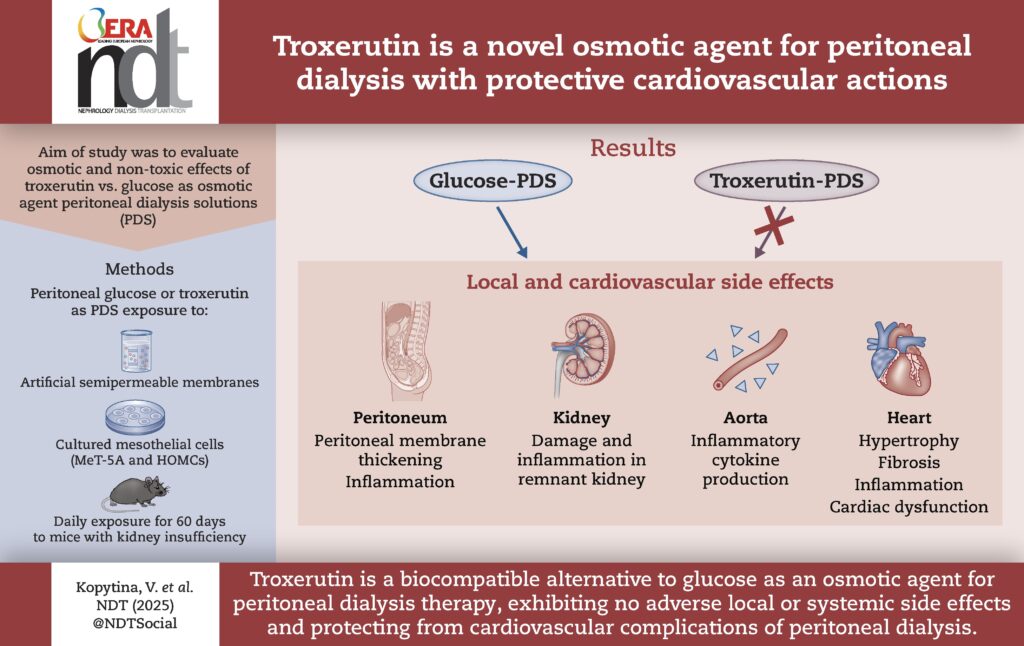
Org. Lett. 2025
Synthesis of Multisubstituted Pyridines by Heterocyclization of TosMIC Derivatives: Total Synthesis of Caerulomycins A and K
José A. García-García, José Luis Aceña, Patricia García-García, David Sucunza*
A concise synthesis of multisubstituted pyridines from α-allylic TosMIC derivatives and electrophiles is reported. The process involves a tandem heterocyclization exploiting the dual reactivity of the isocyanide group. The methodology tolerates various electrophiles, including halogen sources, and proceeds under mild conditions. Its utility is showcased in the total synthesis of caerulomycins A and K, in only five steps from TosMIC.
Org. Lett. 2025
DOI: https://doi.org/10.1021/acs.orglett.5c04454

Dr Valle Palomo Talk
Dr. Valle Palomo talk
Assistant Research Prof. (tenure track), (IMDEA Nanociencia).
Head of the Biosensors in Neuroscience
The Revolution of Nanotechnology and Its Application in Biomedicine
Friday, December 5th, 12:30 h, Sala de Grados, School of Pharmacy
Online: https://eu.bbcollab.com/guest/0268bb035b344144b6dcfcb06ec3b92e
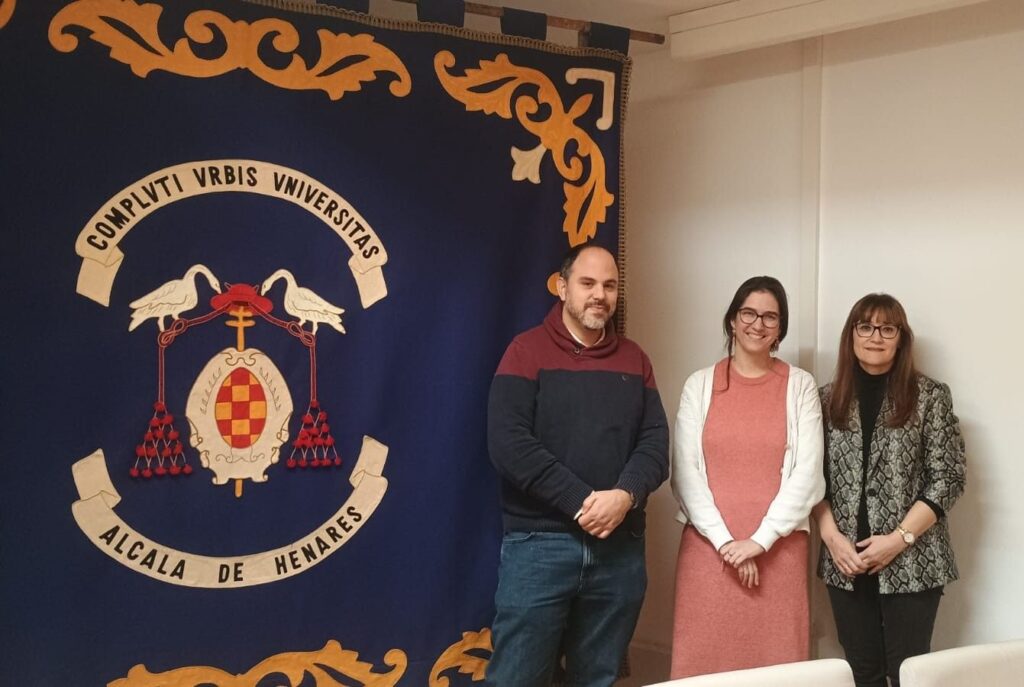
Dr. Elena Sandoval Talk
Dr. Elena Sandoval talk
R&D Scientist (GalChimia).
Descubrimiento de Fármacos: la Visión de una CRO
Thursday, November 27th, 12:30 h, Sala de Grados, Phaculty of Pharmacy – UAH
Online: https://eu.bbcollab.com/guest/0268bb035b344144b6dcfcb06ec3b92e
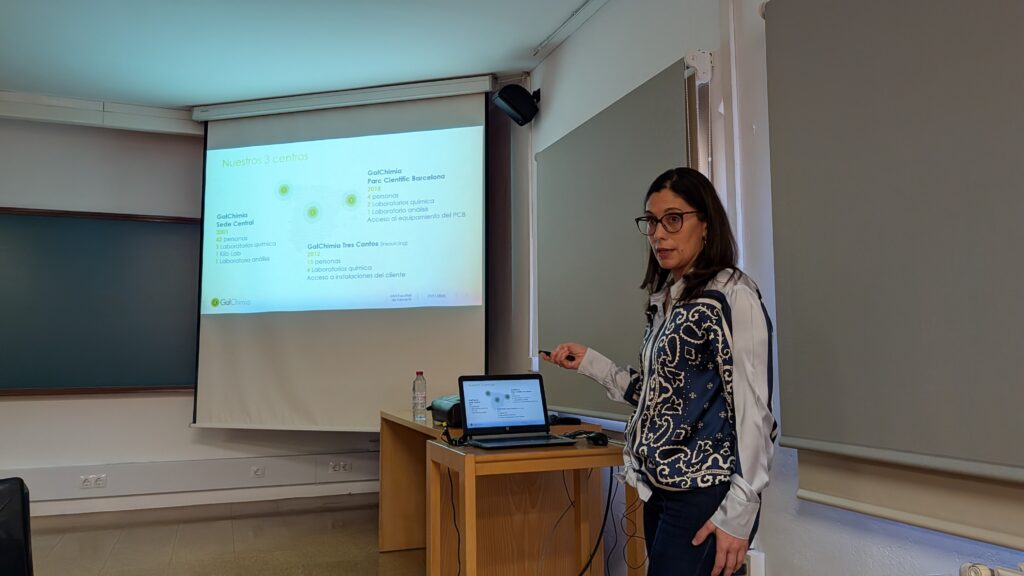
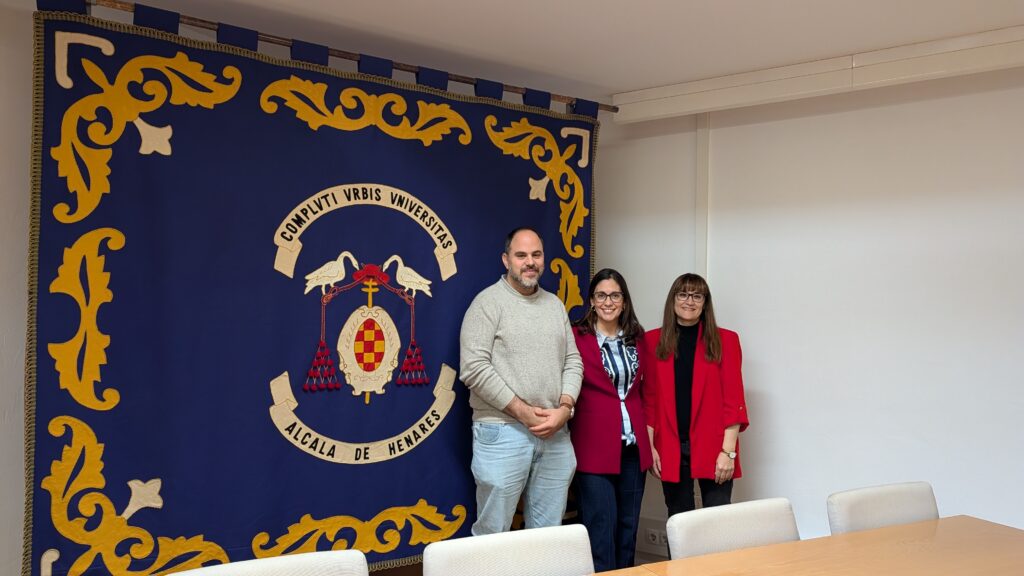
Dr. Nogueira Talk
Dr. Juan José Nogueira Pérez talk
Tenured Scientist, (Universida Autónoma de Madrid).
Head of the MoBioChem
Computational Modelling of Biological Systems
Wednesday, November 26th, 13:30 h, Room 0.5, Edificio Polivalente
Online: https://eu.bbcollab.com/guest/0268bb035b344144b6dcfcb06ec3b92e
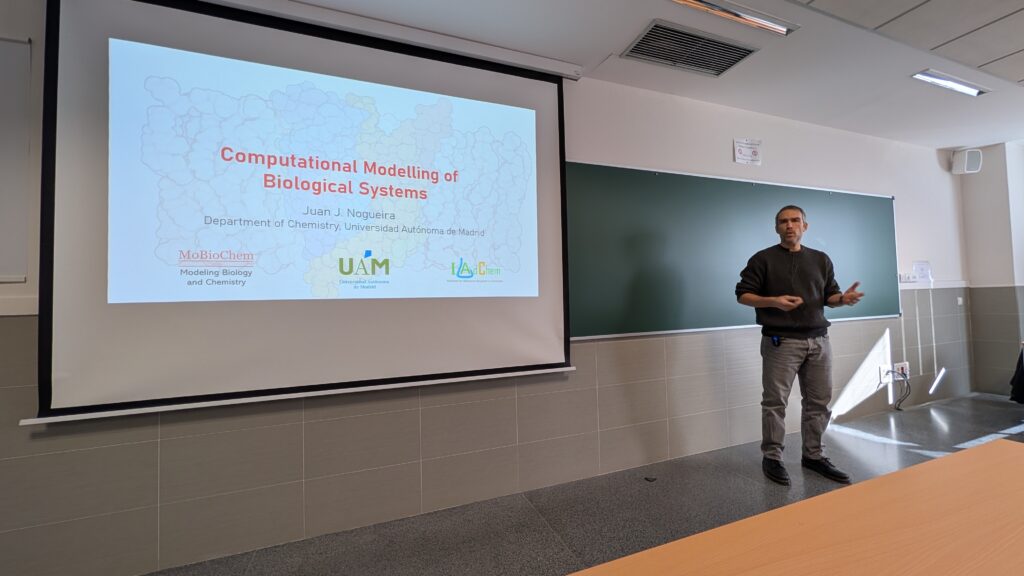

Synlett 2025
Selective Construction of Diverse Polycyclic Compounds by Electrophilic Cyclizations of Biaryl-Embedded 1,7-Enynes
Lucía Sánchez-Jiménez, Patricia García-García, Manuel Á. Fernández-Rodríguez*
Electrophilic cyclizations of biaryl-embedded 1,7-enynes enable the selective synthesis of dibenzofused polycycles with diverse topologies. The outcome strongly depends on the promoter—gold(I) complexes, Brønsted acids, or electrophilic boron reagents—as well as the substitution pattern of the enyne. This Account highlights recent advances and establishes a basis for future developments through the controlled design of substrates and activation modes.
Synlett. 2025
DOI: 10.1038/10.1055/a-2738-8420
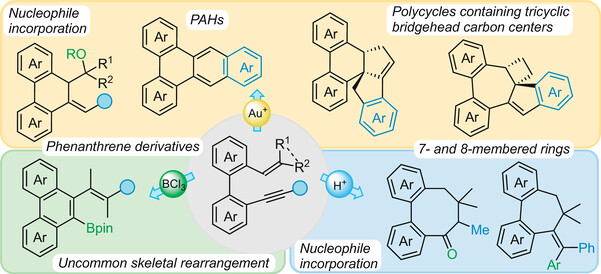
Belen barra Poster Prize
Congratulations to our PhD student Belén Ibarra for winning the Best Poster Prize at the XXI Symposium of Young Researchers of the RSEQ in Zaragoza. Belén is doing her thesis under the supervision of Dr. Estibaliz Merino.
Congratulations Belén!
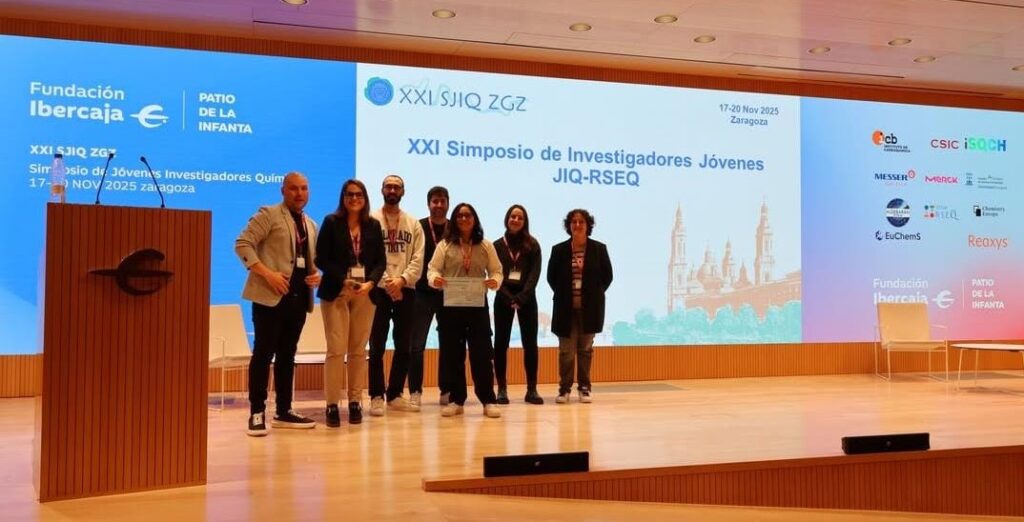
Dr. Ruth Pérez Fernández talk
Dr. Ruth Pérez Fernández talk
Tenured Scientist, Organic Chemistry, (Universida Complutense de Madrid),
Head of the Sistemas Químico-Biológicos
Adaptive Chemical Systems for Protein Recognition and Regulation
Friday, November 21· 12:30 h, Sala de grados, Faculty of Pharmacy
Online: https://eu.bbcollab.com/guest/0268bb035b344144b6dcfcb06ec3b92e
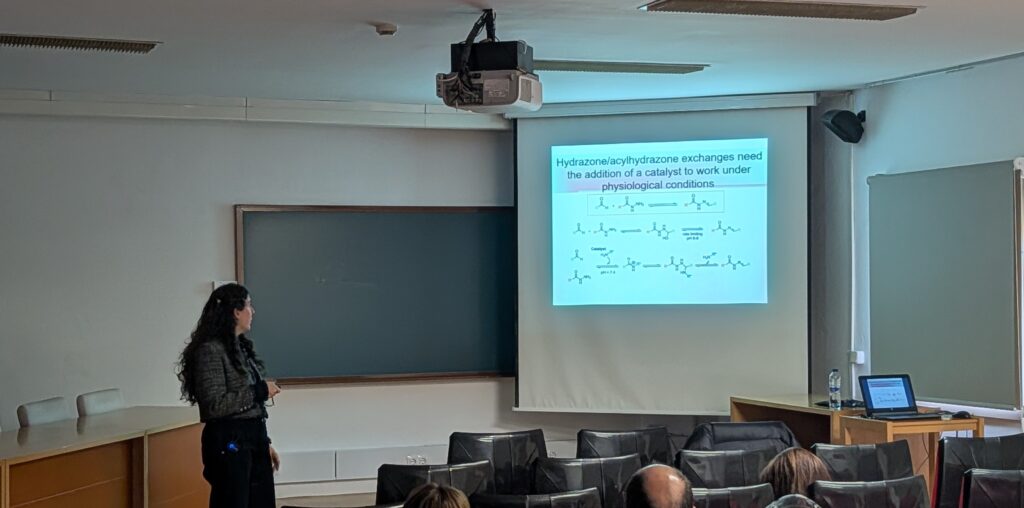

Dr. Clara Mañas Awarded with the Best Doctoral Thesis in Health Sciences
We are pleased to announce that Dr. Clara Mañas has been awarded the prize for the best doctoral thesis in the Health Sciences category by the Sociedad de Condueños.
Dr. Mañas award-winning thesis, titled “Design and study of novel reactivities of alkynylazobenzenes,” represents a significant contribution to the field. The award recognizes the exceptional quality and originality of her research.
The Society of Condueños Awards are given annually to recognize excellence in academic and cultural fields. The Society collaborates with key institutions in Alcalá to grant these prestigious awards, which celebrate the best doctoral theses across several disciplines at the Universidad de Alcalá
Congratulations Clara!
